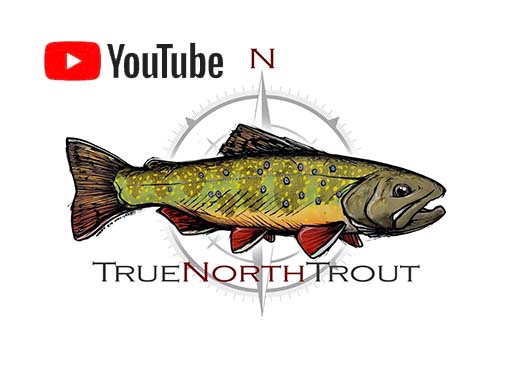This essay originally appeared in Northern Express and is reprinted here by permission of Robert Downes (chief editor) and Kristi Kates.
Summer brings with it many things — and among them are a couple that, while merely a sign of the season to some, can really, er, bug others. Each year in Northern Michigan, mayflies — also incorrectly called “fish flies” — and junebugs return to the region, bringing with them a host of misconceptions, old wives’ tales, environmental benefit, and environmental detriment.
Maybe the Water?
Where there are mayflies, there is good quality water, one old mayfly legend says. And apparently, that one’s true. Duke Elsner is the DNR’s local go-to guy for insect info; he’s the region’s Agricultural Extension Educator, and also holds a degree in entomology (the scientific study of insects).
And he agrees with that particular item of mayfly lore.
“Definitely,” Elsner confirms. “The species requires clean water with high oxygenation, so, yes, where there are mayflies, there should be good water as well.”
Elsner points out that there are literally hundreds of species of mayflies, of which many can live in one geographic region, town, swamp, or even a single stream.
“For each mayfly species, there is an environmental cue that makes them hatch,” Elsner explains, “something along the lines of the water getting warmer in a stream, for instance. Some mayflies need moving water, some need still water, some need other elements; the interesting thing about that fact is that two batches of the same species of mayfly can hatch from the same stream at different times, simply based on the fact that one portion of the stream warmed up before the other.”
If all of this talk of hatching insects isn’t sounding too appealing to you, keep in mind that mayflies — in spite of the somewhat disconcerting sight of them swarming or plastered all over the side of your house or car during the peak of their season — only get to live for a very short period of time; so perhaps should be pitied rather than feared.
“Their only goal in their short life is to fly around and mate,” Elsner says, “and they have to achieve that in the lifespan of just a day or two.”

Mayfly Mega-Hatch

Mayfly Mega-Hatch
Fly Away May
All of that flying around is the subject of another mayfly legend — that they show up on weather radar. Well, that one’s true, too. Just a couple of years ago, the mayfly hatch in the LaCrosse, Wisconsin region was so huge that it showed up on National Weather Service radar screens for several weeks, as the insects hatched and left the surface of the Mississippi River en masse.
But the large hatches are a good thing.
Many areas of the U.S., including the Great Lakes, have experienced record-setting mayfly hatches in recent years, which is likely indicative of improving water quality throughout the region.
Another reassuring fact about mayflies is that they’re completely harmless; Elsner confirms that, in spite of their spiky appearance, they can’t sting or bite, and have no jaws. Contrary again to their reputation, they’re actually a very beneficial and necessary insect, as insects go.
“Mayflies are a big food resource for both fish and birds,” Elsner explains, “and often for bats, as well. They are a tremendous resource in the food chain, so much so that their images are copied by fly fisherman.”
Fly fishermen do indeed consider the mayfly an accomplice to their fishing excursions — many fly-fishing lures, called “flies,” are crafted, or “tied,” to mimic the look of the adult mayfly, also called a “dun,” a tricky decoy that can be plopped down in the middle of a stream, right amidst an overrun of the real thing.
Too many mayflies, which, as already mentioned, expire after just a couple of days, can result in drifts of decaying, parchment-like mayfly bodies, though — and that’s not the most pleasant sight on a sidewalk or beach. But if the environmental balance is generally good, they simply become a food source, to then be forgotten until the next summer rolls around.
Junebug Alert
And now on to junebugs — and we’re not referring to the 1908 experimental aircraft, the comedy-drama film, or the new-wave song by The B-52s. Nope — you’ll recognize the junebug by its constant search for light, which can often result in them zipping their way into your house, or banging their hard-wing shells against your screen door for hours on end.
A cousin of the scarab beetle — most popularly seen in Egyptian artworks — the junebug, also referred to as a June beetle, is oval shaped and a black or reddish-brown in color; it’s nocturnal, and can both fly and waddle along the ground. They’re fairly harmless as adults — although most human adults don’t like having them around.
“The adults don’t really eat very much – their jaws are tiny, so they might just chew on a leaf now and then,” Elsner says, “but most people dislike them because they happen to have gangly legs and sharp claws, so it can be difficult to get them out of your hair or off of your sweater if they happen to land there. But otherwise, the adults are harmless.” Note that Elsner keeps mentioning that the adults are harmless — that’s because you wouldn’t want your garden to have a run-in with the junebug at its grub stage.
“They are definitely pests where agricultural crops are concerned,” Elsner explains, “if there are a large amount of them in the grub stage, they can damage turf grass and chew on the roots of other plants; skunks and raccoons also like to dig up the grubs, so your lawn or garden can sustain environmental damage that way.”
So what should you do if you’ve got a junebug overload? Once again, fishing provides the rescue.
“Catching bass or bluegills,” Elsner chuckles. “Fishermen really like to use them for that.”

